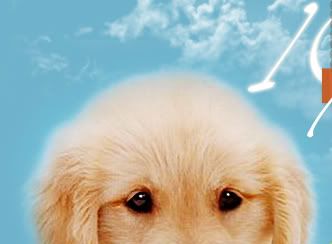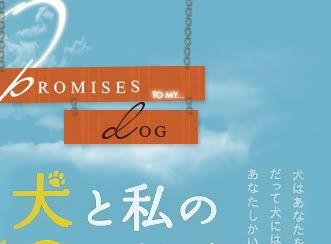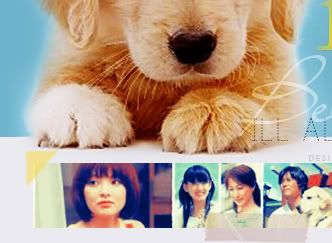 |
 |
||
 |
 |
||
Thursday, December 31, 20092009 was a tough year,i thank those who constantly never gave up hope on me and believe in my growth.I thank those who have been obstacles and allow me to grow in life.And for all the memories.thank you..The flower that blooms in adversity is the rarest and most beautiful of all.
Wednesday, December 30, 2009Smile.Crap,i've been having sudden piercing pain on my chest lately,actually i've been stuck with this for about 2years already,just that lately its been much worst,sometimes till the extend of not being able to breathe for a few seconds : (, i just hope i can still do sports.well,i've been thinking..maybe its due to stress,i've heard that your muscle around the chest area contracts due to stress or something(not sure :/), i doubt its anything related to my heart of my lungs(well,i hope so though, lol) Sigh,guess i gotta head to Singapore General Hospital and do a check up about this while doing my physio therapy there.
Tuesday, December 29, 2009LIST OF FOOD DOGS SHOULD NOT EAT! This is a list of food, dogs should not eat.Hope this helps those who own a dog! :D. Source: http://www.peteducation.com/article.cfm?c=2+1659&aid=1030
Friday, December 25, 2009A man can fail many times, but he isn't a failure until he begins to blame somebody else.No matter how many times the past appears in my mind,i'm not going to brood or rant about it anymore, i want to change myself, pick up myself everytime i fall, fight those past which continuously appear right before me.i'll look forward to what lies ahead,and not whats behind.I'll never forgive myself if i don't this.
AKITA INUS Appearance The breed stands 64 to 70 cm at the shoulders. Females weigh anywhere from 34-50kg. Males are 34-54kg. The Akita Inu come in only five colours: Red, Fawn, Sesame, Brindle, and Pure White. All except white must have whitish hair on the sides of the muzzle, on the cheeks, the neck, chest, body and tail. Black masks, as seen in the American Akita, are not permitted in the Japanese Akita Inu. All colors are accepted in the American Akita. The Pinto color is not accepted as a Japanese Akita color, but is as an American Akita color. In the U.S., some breeders interbreed the original Japanese type with the heavier American type, which is larger, and allows more colors. It is felt by some that combining the two types leads to improved appearance and genetic health by increasing genetic diversity. In the United States, there is only a single Akita breed registered by the American Kennel Club, whereas they are separated into two breeds in every other country in the world except Canada. In all other countries the breed has been separated into two breeds: the Akita Inu and the American Akita. However, the American Akita is seen by some American breeders as being a different breed than the Japanese and these breeders advocate a splitting of the one breed into two. Akitas possess a double coat, with a dense straight undercoat, and a thick outer coat. This coat makes the dog waterproof, as well as being well-equipped for the fierce winters in northern Japan. Due to the thickness of their coat, the breed requires daily grooming, and also an awareness of the dog's heavy shedding, especially during warm weather. The Japanese Akita Inu is a loyal, docile and aloof. They are well known for being excellent house dogs, they are clean and quiet, only barking when there is something to bark about. In general they are very friendly and easy going dogs. Health Mortality Akitas in UK and USA/Canada surveys had a median lifespan of about 10 years, which is similar to other breeds of their size. In a 2004 UK Kennel Club survey, the most common causes of death were cancer (32%), cardiac (14%), and gastrointestinal, including bloat/torsion (14%).In a 2000-2001 USA/Canada Health Survey, the most common causes of death were cancer (21%), GDV (=bloat/torsion, 21%), musculoskeletal (15.5%), and autoimmune (7%). Morbidity Some of the health conditions known to affect this breed include:
Gastric Dilatation Volvulus Akita owners should take special note of the high incidence of GDV (Gastric dilatation volvulus) in this breed. Excess gas trapped in the dog's stomach causes "bloat." Twisting of the stomach (volvulus or "torsion") causes or is caused by excess gas. GDV is an emergency condition requiring immediate veterinary treatment. Akita owners should be alert to the symptoms of GDV and know the location of the nearest emergency veterinary facility. History The Akita's ancestors were dogs used by matagi for hunting. These dogs, usually called matagi inu, were not as large as modern Akita dogs. Many of these dogs were used as guard dogs. Many were used to guard the emperor and his children. They were also used for hunting bears, usually trained as mated pairs, with a pair of eagles. The two dogs would attack the bear as it was distracted by the eagles in the air. As a result of this hunting, hundreds of akita dogs were killed by the 120 stone yezo bears which they were commonly used to hold at bay. Recent DNA analysis found that the Akita was among the most ancient dog breeds. Edo Period In the Edo Period, Dewa Province (present-day Akita prefecture) was ruled by the Satake clan. Since the Satake were tozama daimyo (considered potentially rebellious), they received severe restrictions by the Tokugawa Shogunate in all military areas. The clan decided to encourage dog fighting around 1630 in order to make it possible for the samurai to retain their aggressive edge in a way that would not offend the shogunate. Dog fighting became especially popular in the Odate area. Dog fighting enthusiasts in the area began to interbreed matagi inu with dogs indigenous to the area. These dogs, which later turned into the Akita, were called Odate inu at that time. Before World War II After the Meiji Restoration, people began to breed Akita with many dogs from other regions in Japan, such as the Tosa. The Meiji Restoration also ended Japan's closed door policy, and large, western dogs began to enter Japan. As a result, Akita were also bred with German Shepherds, Great Danes, and Mastiffs. This resulted in the breed losing many of its spitz-like characteristics. Akita were later bred with Hokkaido and Karafuto dogs (also known as the Sakhalin Husky), which were introduced to mainland Japan after the First Sino-Japanese War. In the Taisho Period, people such as the mayor of Odate Town began a movement to preserve the Akita breed. By this time, the Akita had begun to turn into a mixed breed as a result of excessive breeding with other dogs. Watase Shozaburo, a Japanese zoologist that successfully proposed the Law for Protection of Natural Monuments (天然記念物保護法) also worked towards preserving the Akita breed. As a result, the Akitainu Introduction Foundation (秋田犬保存会) was created in May 1927 by the mayor of Odate, and nine Akita dogs were designated as natural monuments in 1931. In 1932, the faithful Akita dog Hachikō was featured in an article in the Asahi Shimbun newspaper, which contributed to the popularity of the breed. When Helen Keller visited Akita prefecture in 1937, she expressed that she would like to have an Akita dog. An Akita called Kamikaze-go was given to her within a month. When Kamikaze-go later died because of canine distemper, his brother, Kenzan-go, was promptly sent to her. By 1938 a breed standard had been established and dog shows had been held, but such activities stopped after World War II began. The War and its aftermath During World War II, the number of Akita dogs greatly diminished because of the lack of food. There were also orders to capture all dogs except German Shepherds in order to use their fur for warm army uniforms. Many people bred Akita with Alsatians to avoid capture. When the war ended in 1945, there were fewer than twenty purebred Akita dogs in Japan. However, the Akita became quite popular during the postwar period. Many occupation soldiers liked the Akita, because it was by far the largest Japanese dog. The fact that Helen Keller had an Akita also became well-known when she came to Japan in 1948 and thanked people in Akita for the dogs she was given. Most of the Akita dogs at this time had many German Shepherd-like characteristics. These dogs are currently known as Dewa line, or Dewa type Akita.
HACHI(HACHIKO: loyalty)  I saw this poster at golden village about called ''HACHI'' it has the same storyline as the japanese movie ''Hachiko monogatari''. The dog in this story is a Akita Inu(a japanese breed) (the storyline is at the end of the post). heres the trailer: HACHI 約束の犬(2008)予告編 Hachiko: A Dog's Story TrailerIn 1924, Hachikō was brought to Tokyo by his owner, Hidesaburo Ueno, a professor in the agriculture department at the Tniversity of Tokyo. During his owner's life Hachikō saw him off from the front door and greeted him at the end of the day at the nearby Shibuya Station. The pair continued their daily routine until May 1925, when Professor Ueno did not return on the usual train one evening. The professor had suffered a stroke at the university that day. He died and never returned to the train station where his friend was waiting. Hachikō was given away after his master's death, but he routinely escaped, showing up again and again at his old home. Eventually, Hachikō apparently realized that Professor Ueno no longer lived at the house. So he went to look for his master at the train station where he had accompanied him so many times before. Each day, Hachikō waited for Professor Ueno to return. And each day he did not see his friend among the commuters at the station.
Wednesday, December 23, 2009 Never was a fan of WWE,but, lol. (anyways ignore the little small icons,its there because i found this on a gaming website lol)
Saturday, December 19, 2009Never lie, steal, cheat or drink. But if you must lie, lie in the arms of the one you love. If you must steal, steal away from bad company. If you must cheat, cheat death. And if you must drink, drink in life. For life isn't about the number of breaths you take. It's about the moments that take your breath away.
Thursday, December 17, 2009Love is a minefield. You take a step and get blown to pieces, put yourself back together again and stupidly take another step. I guess that's human nature. It hurts so much to be alone that we'd all rather blow up than be single.
|
owner
|
||
|
|
|
|
|
